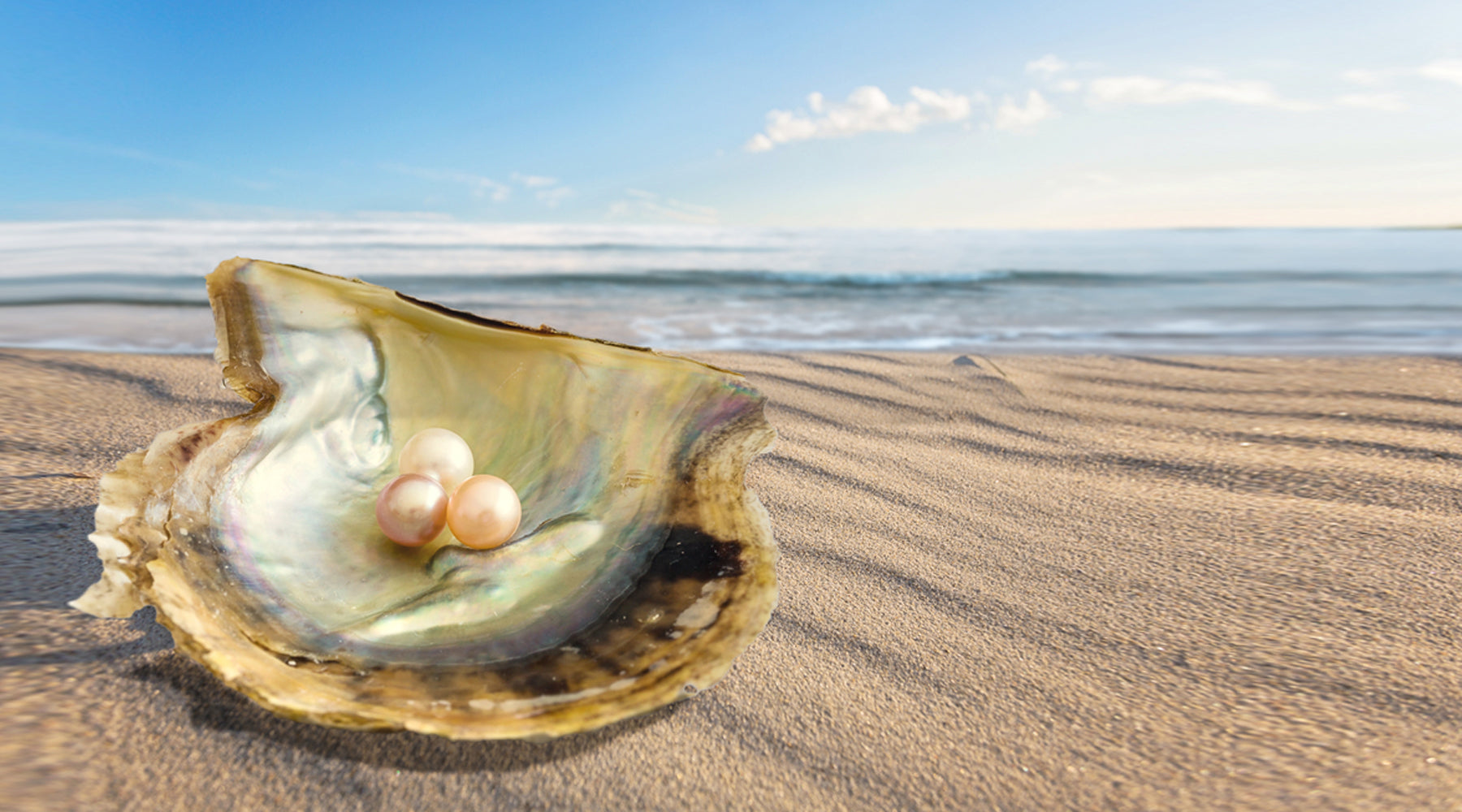Think you can find pearls in ANY oyster? Do you imagine yourself walking along the shoreline, stumbling across an oyster shell, and BAM, you found a pearl?
Sorry to burst your bubble! That is almost certainly never going to happen
We're not denying pearls are found inside the shells of oysters and mussels. However, finding one inside any random shell you stumble upon is nearly impossible. So, the question is: what are the odds of finding a pearl in an oyster?
Keep reading to learn about the different types of pearls you can find and where!
The rarest of the rare: Natural Pearls!
Natural pearls are so rare that the only natural pearls you'll find would probably be in vintage jewelry.
If we were to put it in numbers, about 1 in approx. 10,000 oysters produce a pearl naturally. And of those, it's even rarer to be a picturesque round pearl. Shocking, we know.
Oysters that naturally make pearls are often called 'wild' oysters since they're out in the waters and don't require human help to produce these gemstones.
You must be wondering how these wild oysters produce pearls. We extensively covered this in one of our previous blogs: Does Every Oyster Have A Pearl?
But if you're new here, here is a brief reminder:
Oysters are formed when an irritant enters the mollusk by accident. Usually, a stray food particle finds its way into an oyster shell. But this irritant could be anything in the sea. Feeling threatened by this foreign thing that's gotten inside, the mollusk secretes a substance called nacre.
Nacre (pronounced as nay-ker) is the true hero in the pearl-making process. The mollusk covers the foreign particle in layers upon layers of nacre until those layers are hardened to form what we know as pearls!
We bet your next question is: since there are so many floating particles in the waters, shouldn't natural pearls be more common? Well, it's not THAT simple.
Do All Oysters Produce Pearls?
Not all oysters produce pearls, but before we get into it, please brace yourselves; we are about to throw out some scientific terms.
Pearl oysters are part of the Bivalve Mollusks family. The name bivalve comes from their structure being two halves of a shell connected by a hinge.
Fun fact: these bivalve mollusks clean the seawater and remove algae and other pollutants! It makes sense that a foreign particle could get lodged inside in the process.
However, these pearl-making oysters are rare; only a small number of oysters are capable of producing pearls. To be more precise, only oysters that produce nacre can make pearls. This really narrows it down to pearl-producing oysters.
Despite natural pearls being so exclusive, pearl jewelry is available in abundance. How is that possible?
The answer: Cultured Pearls!
Natural pearls are so rare; how do we make all that pearl jewelry? Through the science of culturing pearls!
Firstly, cultured pearls are 100% genuine, authentic, or any other word you want to use to describe the pearl as being "real." The only difference, cultured pearls require human intervention. These pearls are farmed, and a bead is surgically implanted in the mantle of an oyster to trigger nacre production.
Since they're farmed, cultured pearls are readily available in the market and used to make most pearl jewelry and accessories. With natural pearls, there's no telling if the pearls produced will be valuable and can be used to make jewelry. There is just so much more control over cultured pearls.
They can even insert a custom-shaped bead inside the oyster to get a unique and funky pearl shape! Some examples are hearts, stars, coins, diamonds, and more.
Pearls are then categorized into two categories: freshwater and saltwater pearls.
Freshwater vs. Saltwater Pearls: What’s the Difference?
As the name suggests, freshwater pearls are produced by oysters found in, well, freshwater. And yes, Saltwater pearls are found in oysters that live in saltwater.
Saltwater pearls like Akoya are known for their 'mirror-like' luster and classic white color. Generally, these pearls are more valuable and, therefore, more expensive than freshwater pearls.
Find out more about freshwater and saltwater pearls in our blog post: Akoya vs. Freshwater Pearls: Everything You Need To Know.
Parting Thoughts
The odds of finding an oyster with a natural pearl are slim. So, if you come across a vintage pearl piece made of natural pearls, it's likely to cost a fortune!
If you're looking for a trusted vendor to buy pearls from, why not consider DezLin?
We are a family and veteran-owned business based in Lodi, California. We ship same-day globally. Our specialty is making creative product reveals that put a smile on your and your loved ones' faces!



